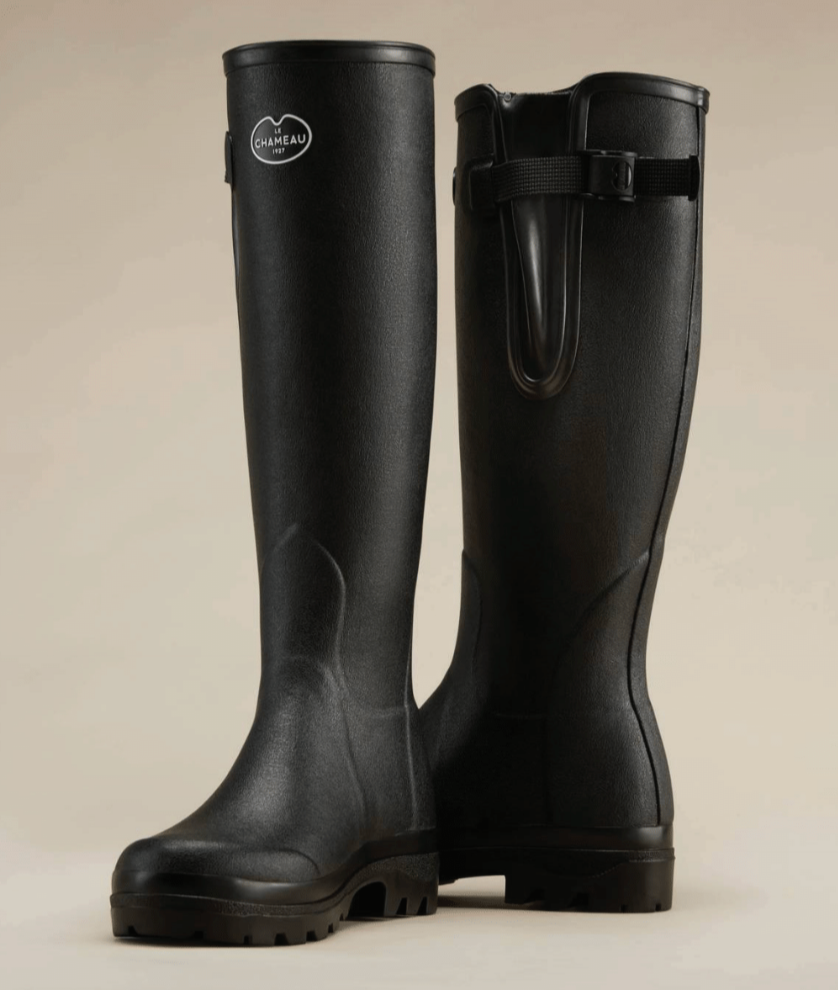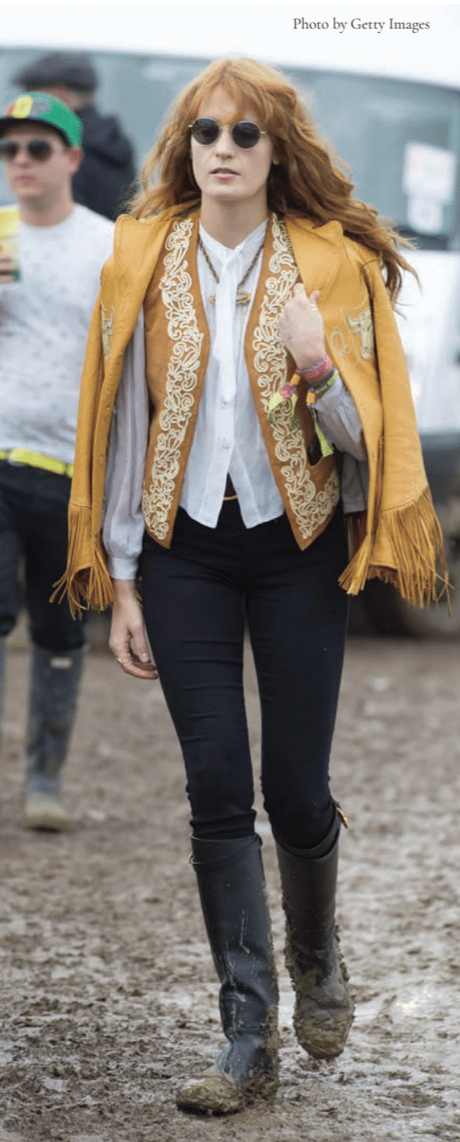WELLIE AND TRULY FABULOUS
Live Beautifully
The Boot That Conquered History, Fashion, and Equestrian Life

The Wellington boot, or “Wellie” as it’s affectionately called, is more than just a practical piece of footwear. It’s an enduring symbol of versatility, steeped in history, and now a cor-nerstone of equestrian life and style. What began as a military innovation has not only weathered the centuries but also evolved into a chic fashion statement. The story begins in the early 19th century with Arthur Wellesley, the 1st Duke of Wellington. Fresh off his legendary victory against Napoleon at the Battle of Waterloo in 1815, Wellesley turned his attention to his wardrobe. He desired a boot that could transition seamlessly from battlefield to ballroom, blending style with function.Enter Hoby of St. James’s, London, the Duke’s shoemaker. At Wellesley’s request, Hoby transformed the Hessian boot—a high-heeled, tasseled military staple—into something sleeker. The result was the first “Wellington boot,” made of soft calfskin leather with a streamlined silhouette and a lower heel.
It was practical for riding yet polished enough for high society.The style caught on quickly, becoming a symbol of sophistication among the British elite. But the Wellie’s transformation had only just begun.By the mid-19th century, Charles Goodyear’s invention of vulcanized rubber revolutionized the manufacturing of waterproof footwear. This innovation reached British bootmaker North British Rubber Company (later known as Hunter), which began producing rubber Wellington boots in the 1850s. These boots were durable, waterproof, and ideal for working in the damp British countryside. Farmers, laborers, and even soldiers adopted them en masse.During both World Wars, millions of rubber Wel-lingtons were supplied to soldiers in muddy trenches, cementing their reputation as the ultimate all-weather boot. Post-war, the humble Wellie transitioned into civilian life, becoming essential for anyone navigating rainy days or muddy fields.Though originally designed for military and agricultural use, the Wellie boot found a natural home in equestrian culture. Its waterproof design made it indispensable for stable work, from mucking stalls to crossing waterlogged paddocks. Over time, bootmakers refined the design, creating versions specifically tai-lored for riders. These included longer shafts for added protection and thicker soles for durability in stirrups.
Today, the Wellie boot is as iconic in the stable as the saddle. From grooms to riders, it’s trusted for its practicality and comfort, ensur-ing that equestrians can tackle any condition with ease and style.While the Wellie has always been the go-to for keeping your feet dry, its rise to fashion fame is a story worth telling. The transforma-tion really took off in the mid-20th century, thanks to the British royals—Queen Elizabeth II and Princess Diana—who showed the world that a boot made for muddy fields could be just as chic as it is functional. Whether they were casually roaming the Balmoral estate or giving the cameras their best royal poise, they turned these practical boots into the ultimate style statementFast-forward to today, and the Wellie is no longer confined to the countryside. Designers have elevated it into a chic urban accessory. Brands like Hunter, Le Chameau, and Aigle offer boots in bold colors, glossy finishes, and even limited-edition collaborations. High-fashion houses, including Chanel and Balenciaga, have intro-duced their own interpretations of the Wellington boot, turning it into a runway darling.
For equestrians, the Wellie remains a practical staple, but its role has expanded. A well-chosen pair can transition from the stable to casual outings without missing a beat. Today’s boots are designed with advanced technology—insulated linings for winter, ergonomic fits for comfort, and even eco-friendly materials for sustainability-conscious consumers.In equestrian circles, the Wellie boot has become a status symbol as much as a utility item. A polished pair of Le Chameaus or a cus-tom-colored Hunter boot signals not just taste but a lifestyle rooted in tradition, elegance, and the outdoors.
WHY THE WELLIE ENDURESThe Wellington boot endures because it embodies the best of both worlds: form and function, history and innovation. It’s a nod to the past while embracing the future, a piece of heritage that adapts to modern needs. For equestrians, it’s more than a boot—it’s a trusted companion, a style statement, and an essential tool.So, the next time you slip into your Wellies, remember that you’re stepping into history. From the battlefields of Waterloo to the barns of Wellington, the journey of this iconic boot is as enduring as its design.
Long live the Wellie!



